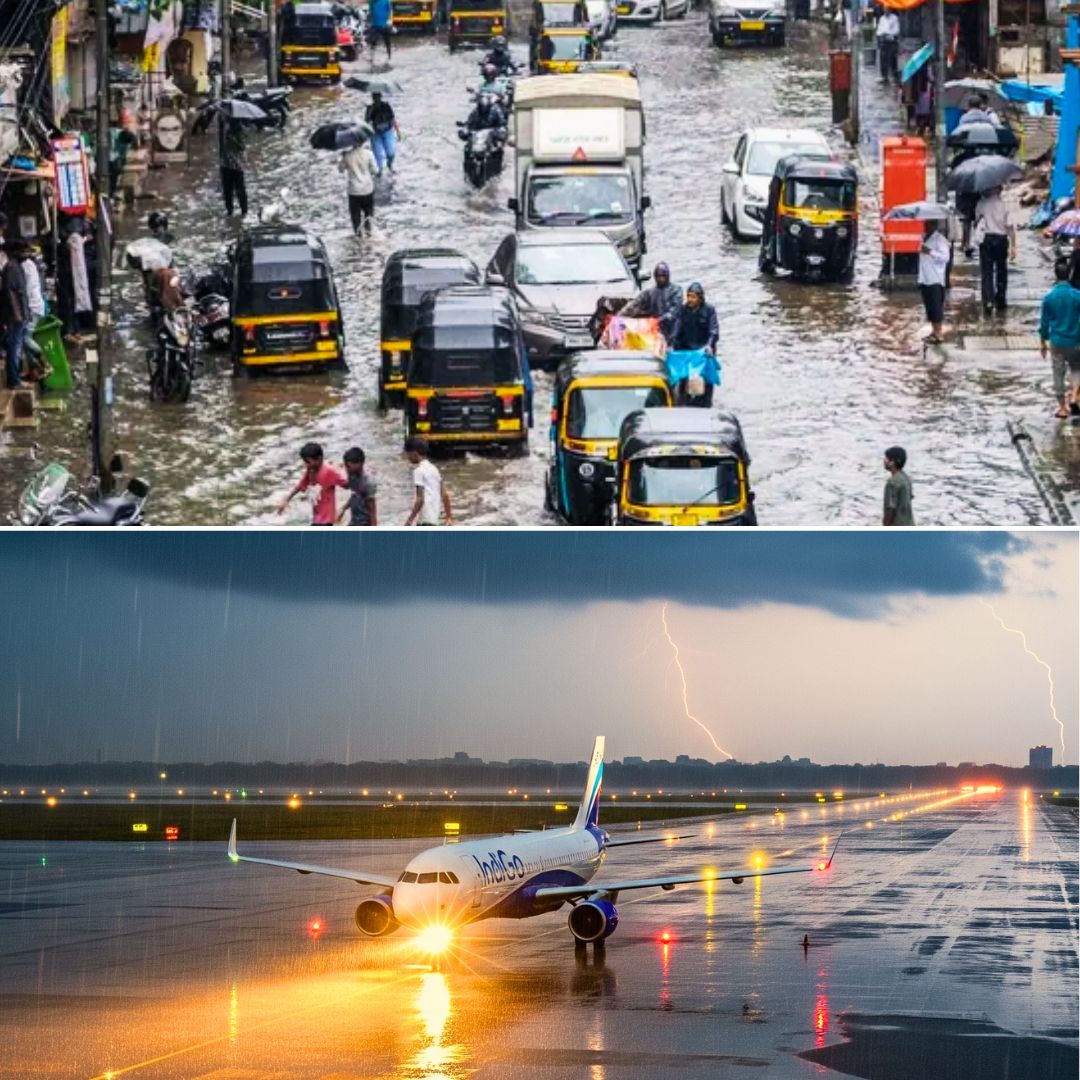On Monday, August 18, 2025, the Brihanmumbai Municipal Corporation (BMC) declared a holiday for all schools in Mumbai following unprecedented heavy rainfall that led to widespread waterlogging and traffic chaos across the city.
Afternoon-shift schools, too, were directed to remain closed to ensure student safety. The India Meteorological Department (IMD) issued a red alert for Mumbai and adjoining districts, signalling extremely heavy rainfall expected to continue through the day.
This deluge caused significant disruption at Chhatrapati Shivaji Maharaj International Airport, with at least nine flights aborting landing attempts due to poor visibility amid intense rain.
Residents faced massive traffic jams and delayed suburban train services, while civic officials urged citizens to avoid unnecessary travel and remain indoors until conditions improve.
Heavy Downpour Brings Mumbai to a Standstill
Mumbai bore the brunt of heavy monsoon showers for the third consecutive day, with multiple areas witnessing relentless rain since early morning. Suburbs such as Dahisar, Kandivli, Chembur, and Bhandup recorded rainfall totals exceeding 180 mm within 24 hours, overwhelming drainage infrastructure and causing streets to transform into virtual canals.
Crucial traffic arteries like the Western Express Highway near Vile Parle and the Mumbai-Goa Highway suffered massive congestion due to waterlogging and stalled vehicles. Key junctions including Gandhi Market in Sion and the Andheri Subway were either flooded or temporarily shut, compounding commuter woes.
The suburban railway network, lifeline for millions, operated with delays as platforms and tracks were inundated. In addition to infrastructural challenges, the situation raised safety concerns for residents.
A dramatic rescue unfolded in Matunga when a police team waded through waist-deep water to evacuate schoolchildren trapped in a bus stranded by rising floodwaters.
The Municipal Commissioner Bhushan Gagrani underscored the need for vigilance and announced a precautionary closure of schools to protect children from travel hazards. The BMC also coordinated with local disaster response teams to address emergencies and ensure swift relief efforts.
Persistent Monsoon Intensity Tests Preparedness
The India Meteorological Department’s red alert for Mumbai, Thane, and Raigad districts was a stark warning of continued intense rainfall, with expectations of further heavy showers lasting into Tuesday morning, followed by an orange alert in the subsequent period.
The city’s rainfall statistics for this monsoon season show an excess amount of precipitation, with official gauges at Colaba and Santacruz reporting totals surpassing 1,000 mm, stressing the limits of Mumbai’s drainage systems.
Despite pre-monsoon preparedness measures such as desilting drains, clearing nullahs, and maintaining open stormwater channels Mumbai’s urban infrastructure has struggled to cope with the severity and persistence of the current spell.
The resulting waterlogging has paralyzed vehicular movement and hindered emergency services in some localities. Transport authorities have been forced to redirect bus routes and limit operations on flooded streets in coordination with the police.
Aviation traffic was equally affected, as nine flights either diverted or aborted landing attempts at Mumbai airport due to poor visibility caused by heavy rain and low clouds.
Such disruptions illustrate the growing challenge of unpredictable weather on urban mobility and airport operations. Meanwhile, the BMC and civic bodies remain on high alert, maintaining round-the-clock monitoring to respond promptly to fresh emergencies.
The Logical Indian’s Perspective
Mumbai’s ordeal with intense rains and flooding is a compelling reminder of the pressing need for climate-adaptive urban planning and resilient infrastructure. The proactive measures taken by the BMC to shut schools and coordinate rescues reflect an immediate concern for public safety, yet also reveal the deeper vulnerabilities of a megacity grappling with the impacts of climate change and population pressure.
Mumbai’s incessant battles with monsoon floods highlight the urgency of investing in long-term solutions modernising drainage infrastructure, expanding green spaces, and designing flood-resilient communities that can endure and recover swiftly.
Furthermore, fostering a culture of preparedness, empathy, and cooperative citizen engagement is vital. Authorities and residents must work hand-in-hand to build awareness, implement sustainable practices, and strengthen disaster response systems.











